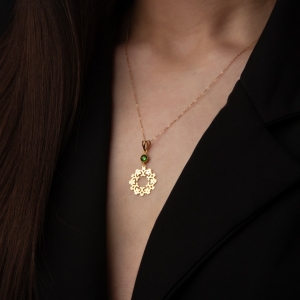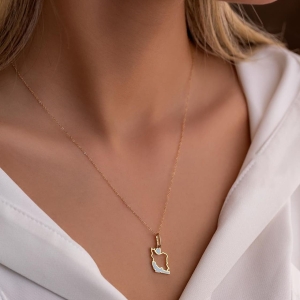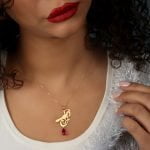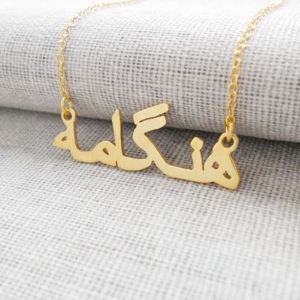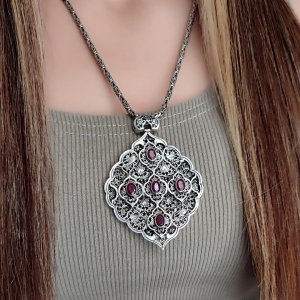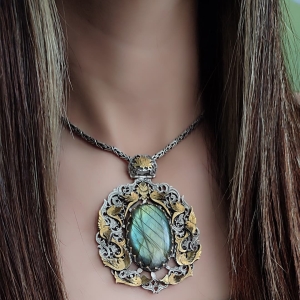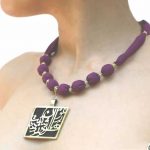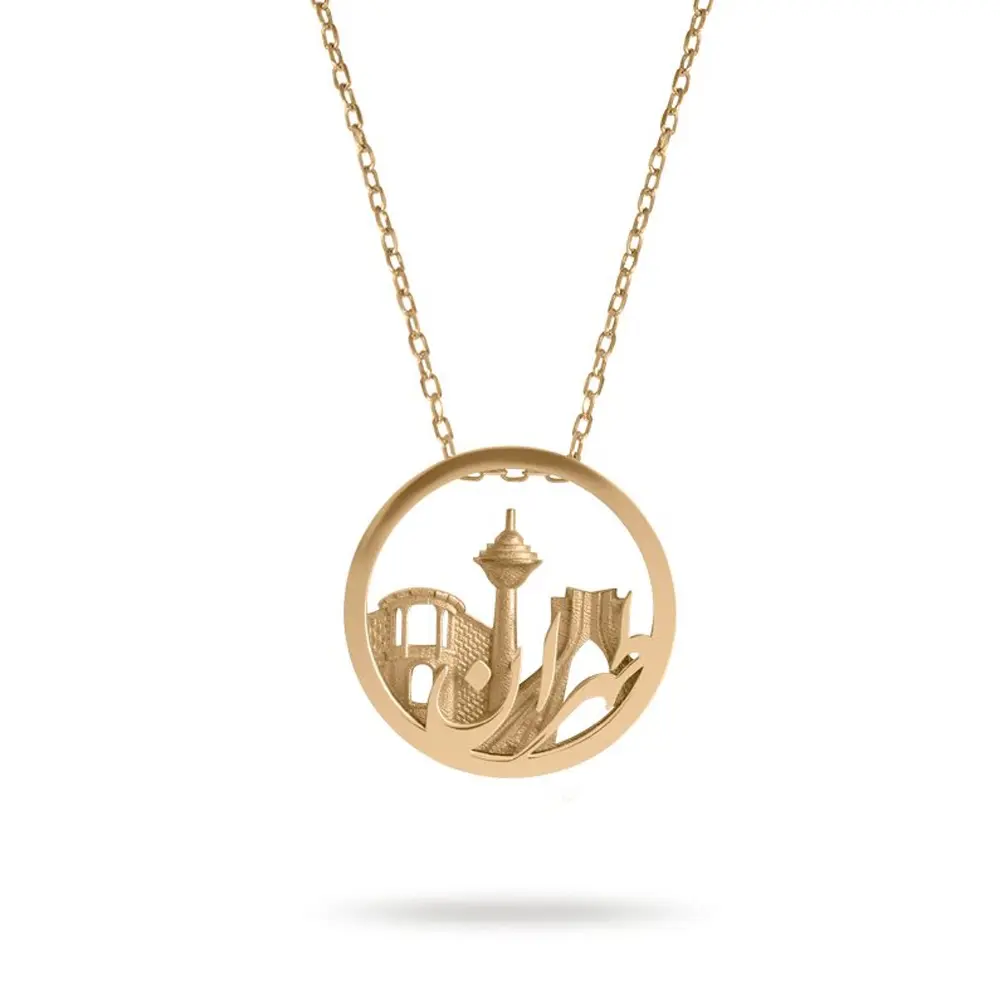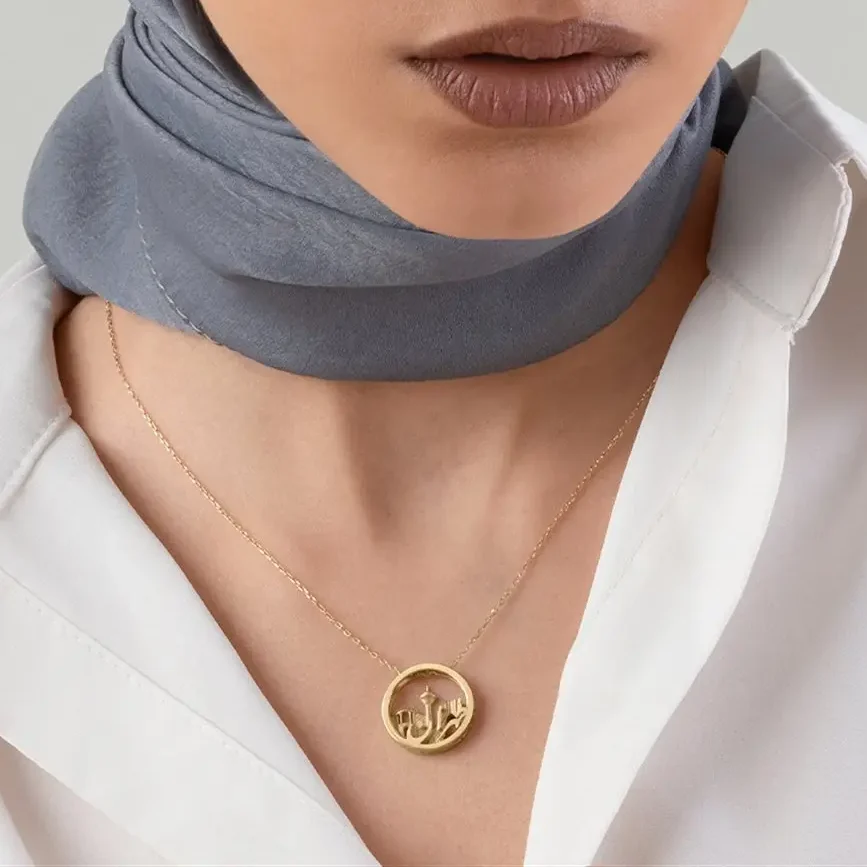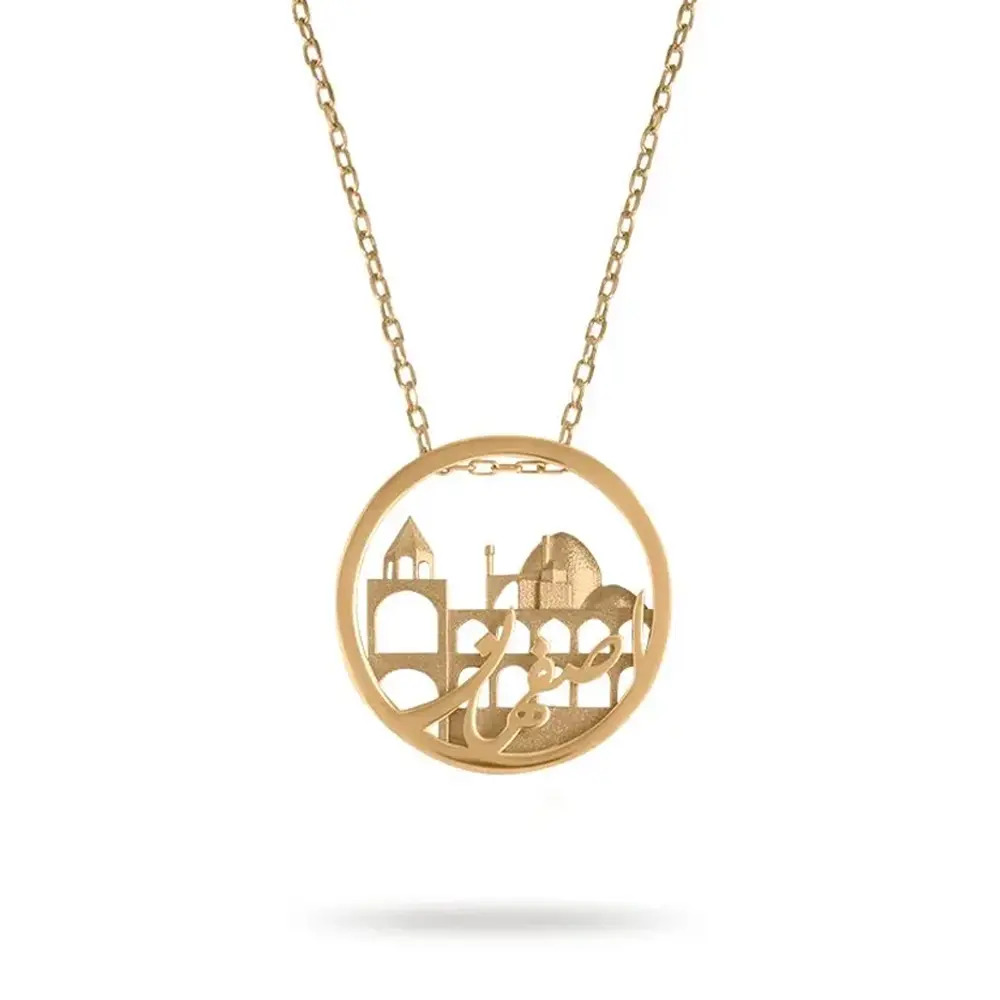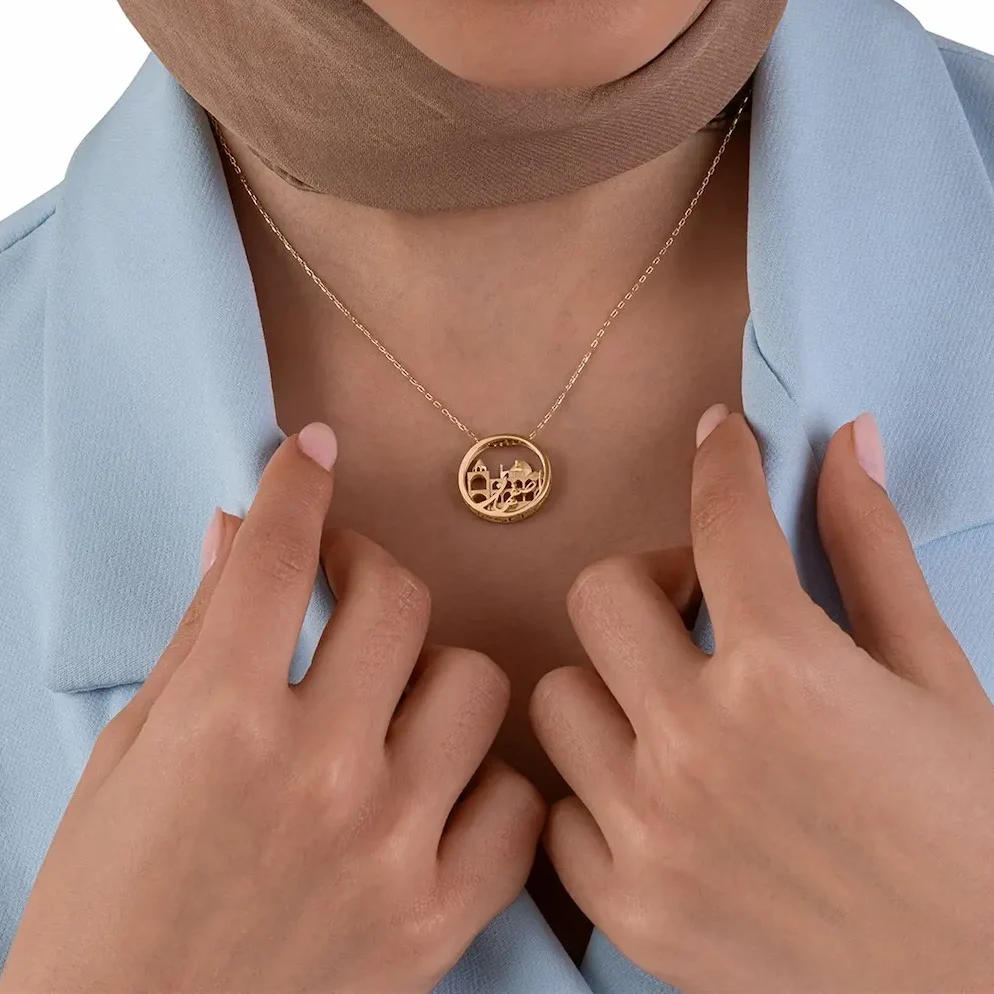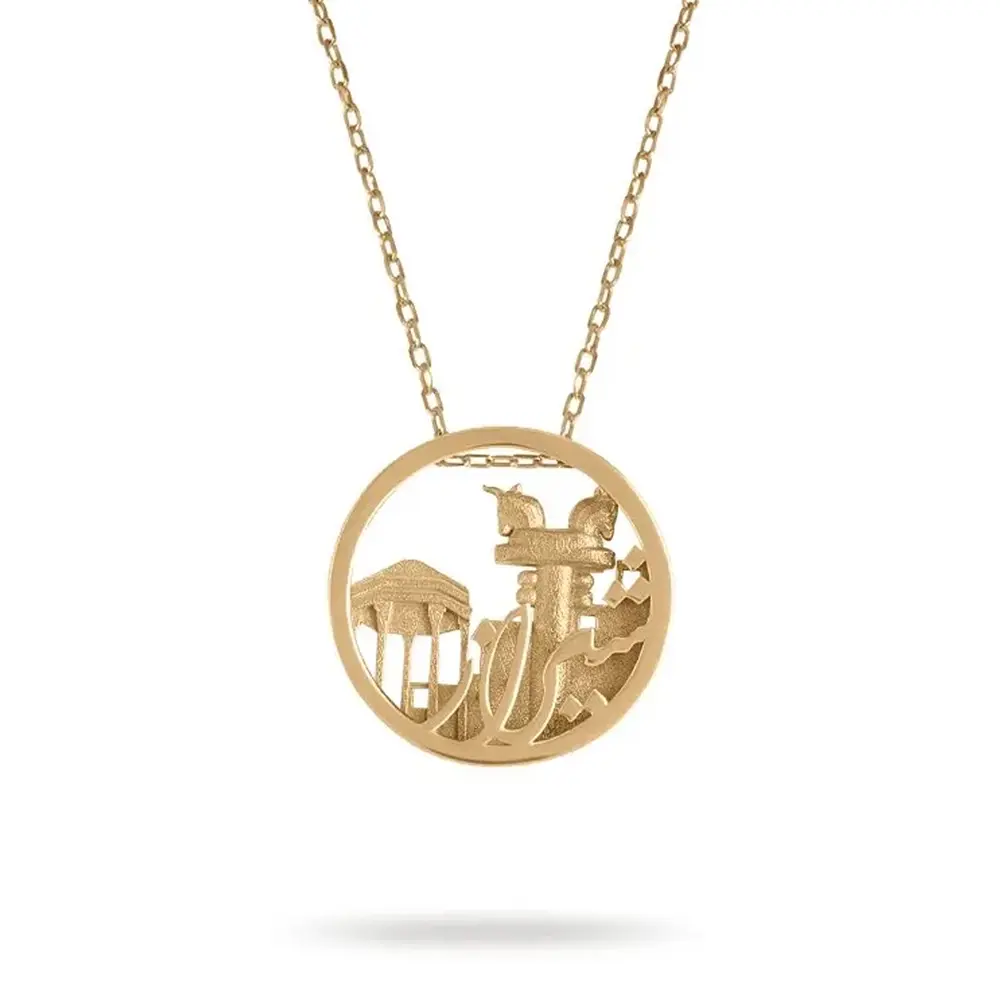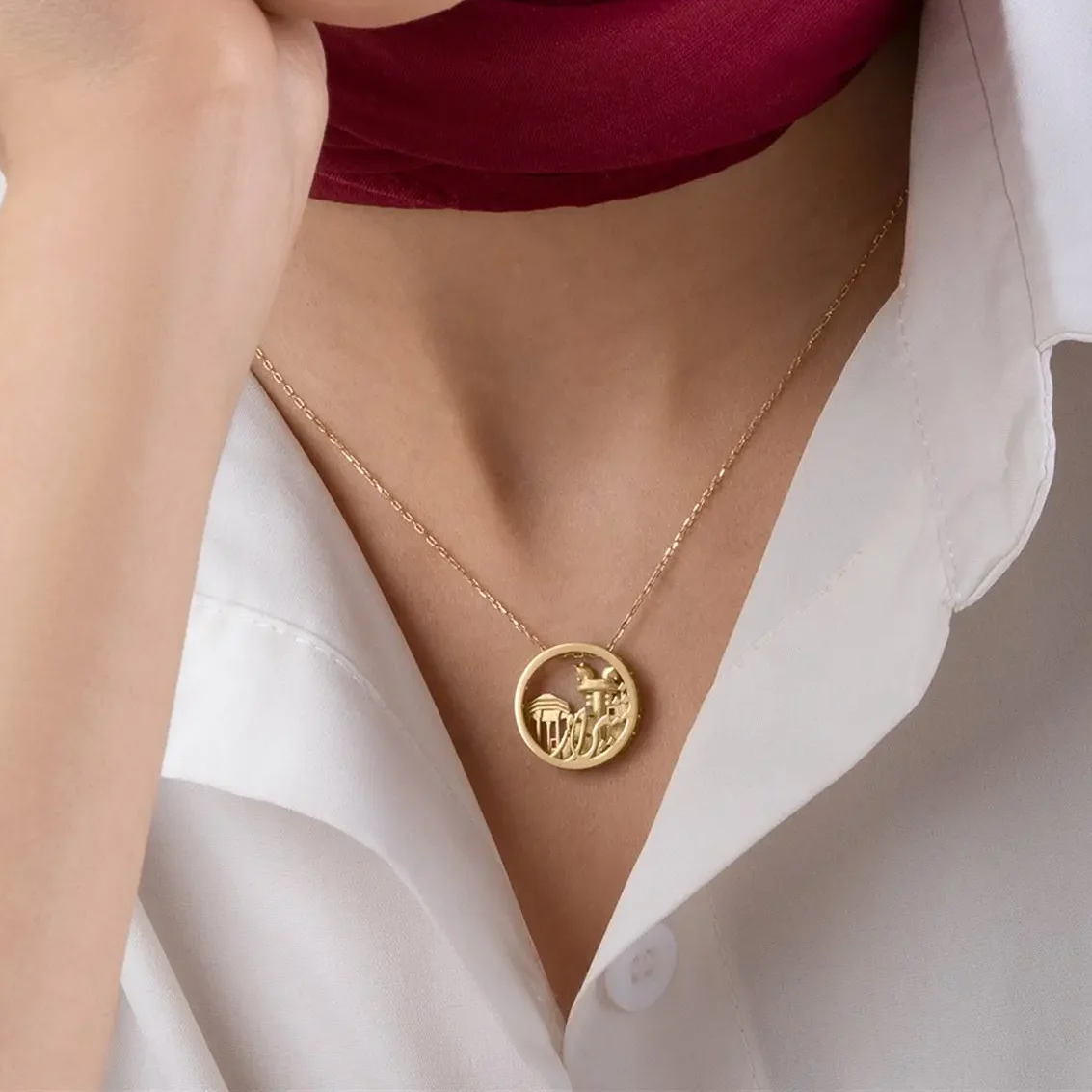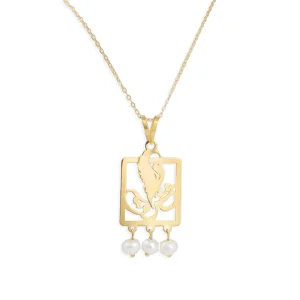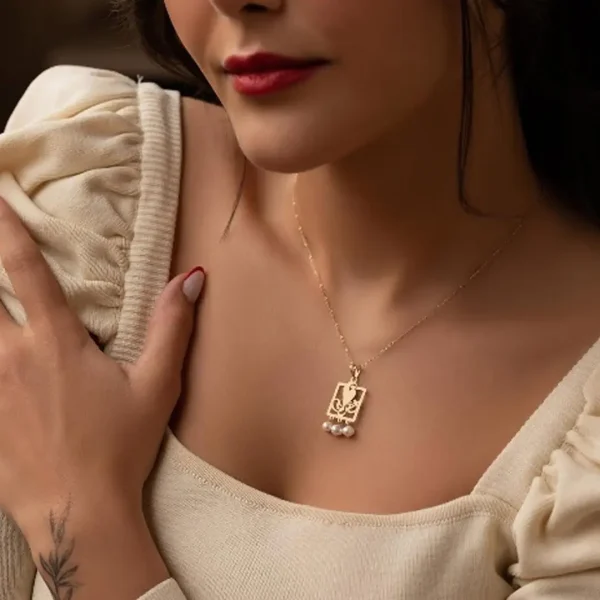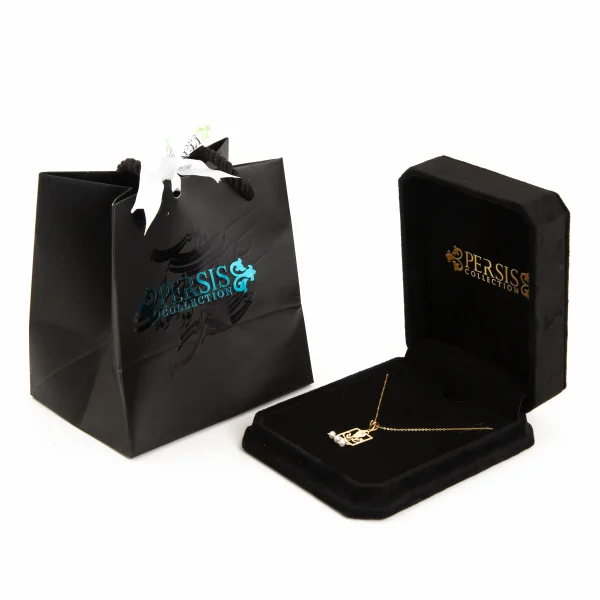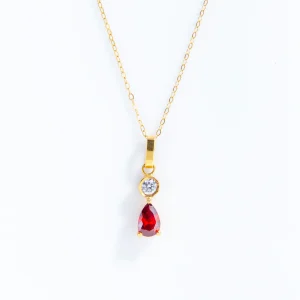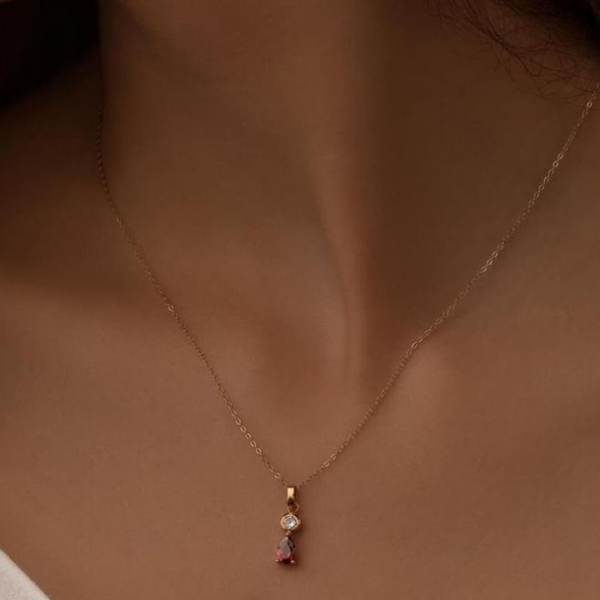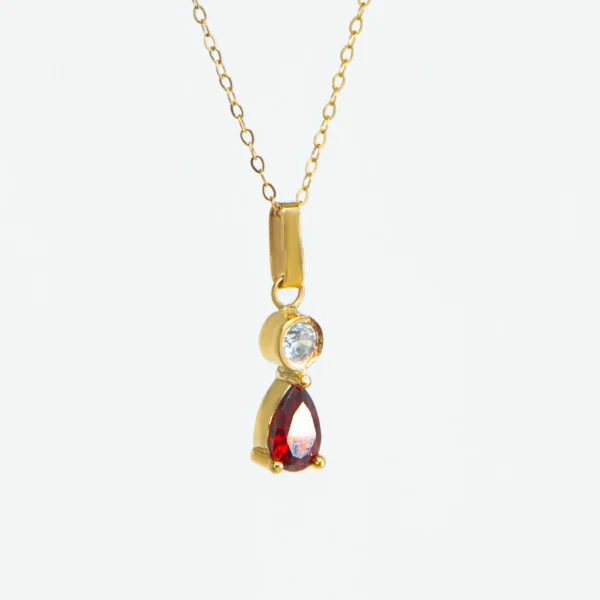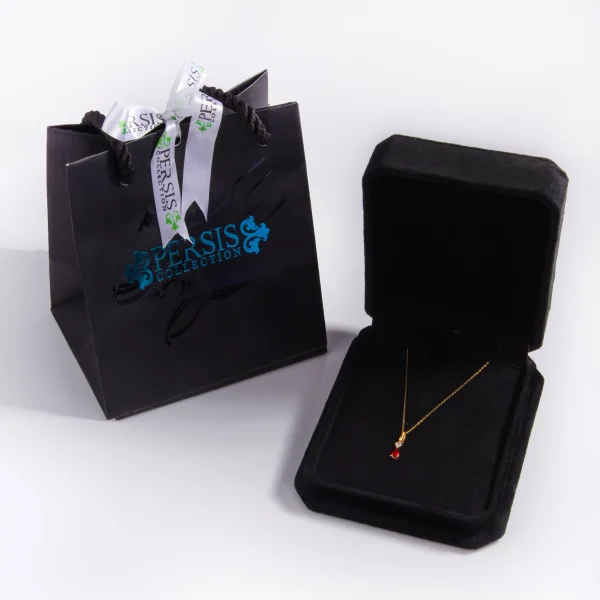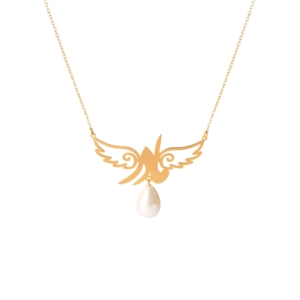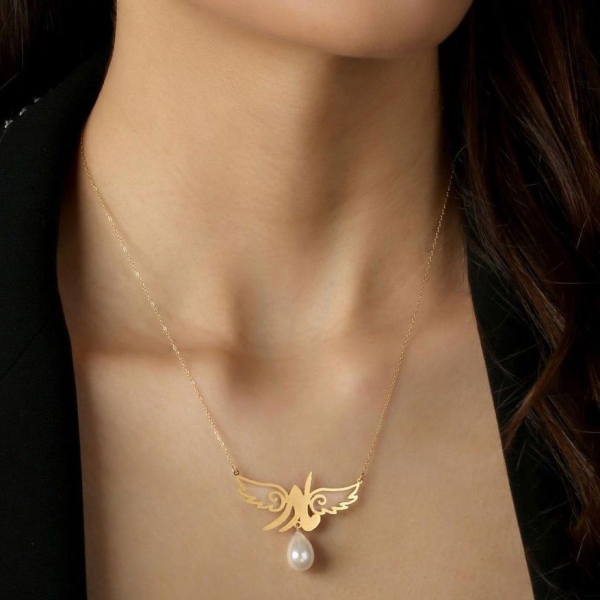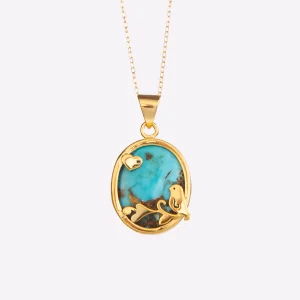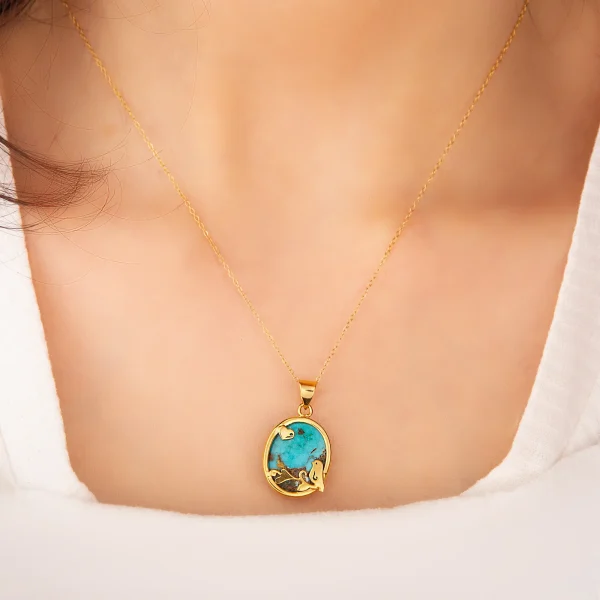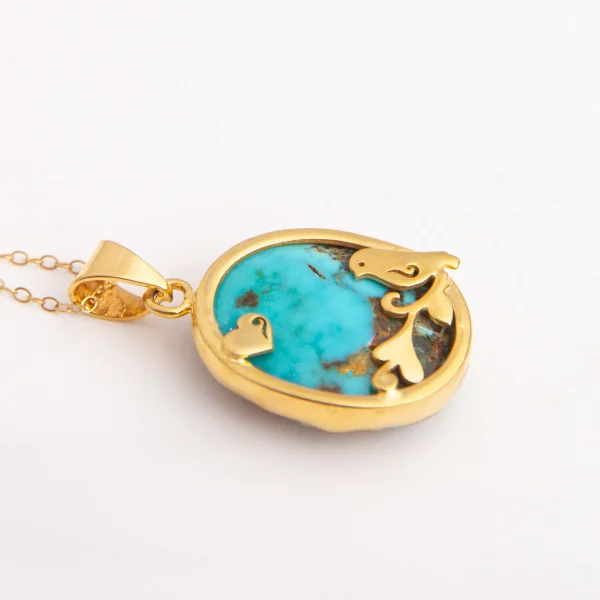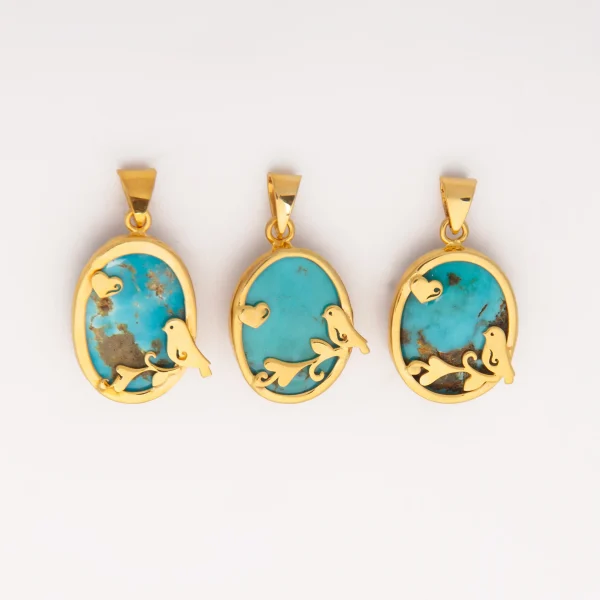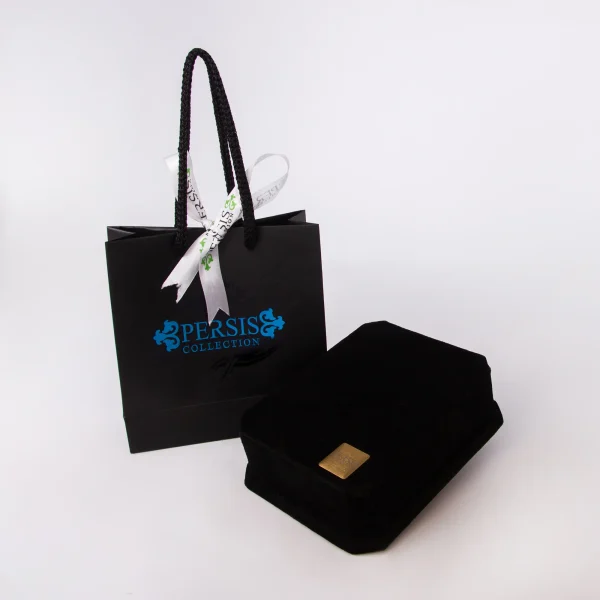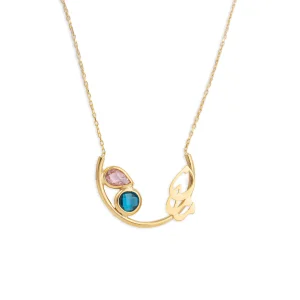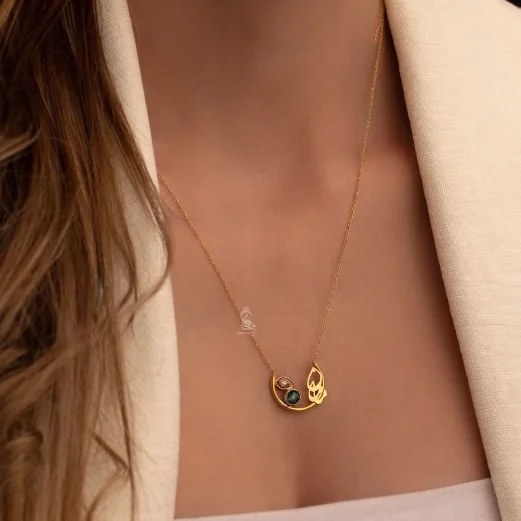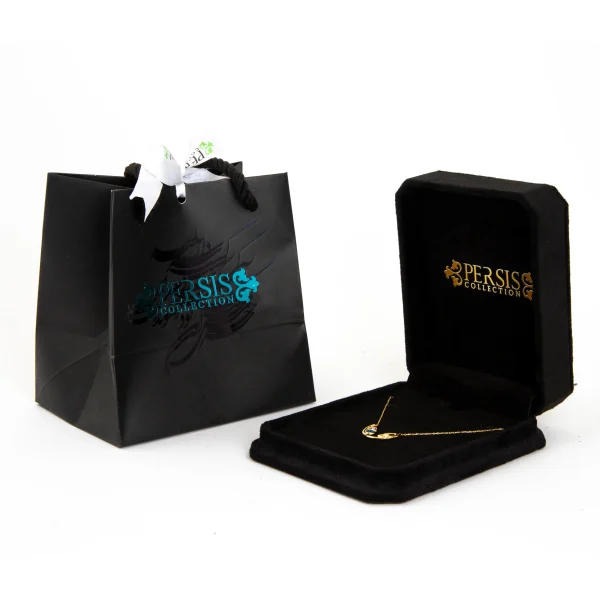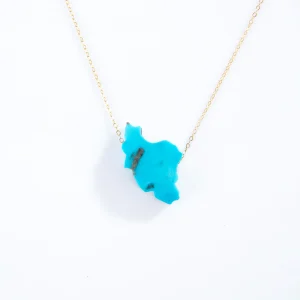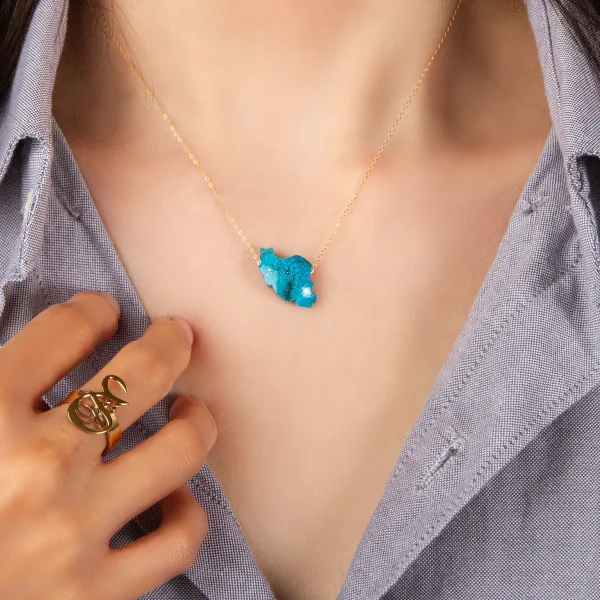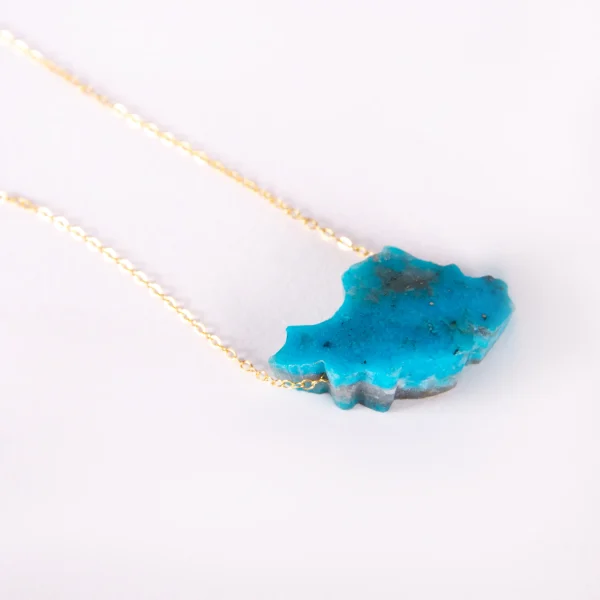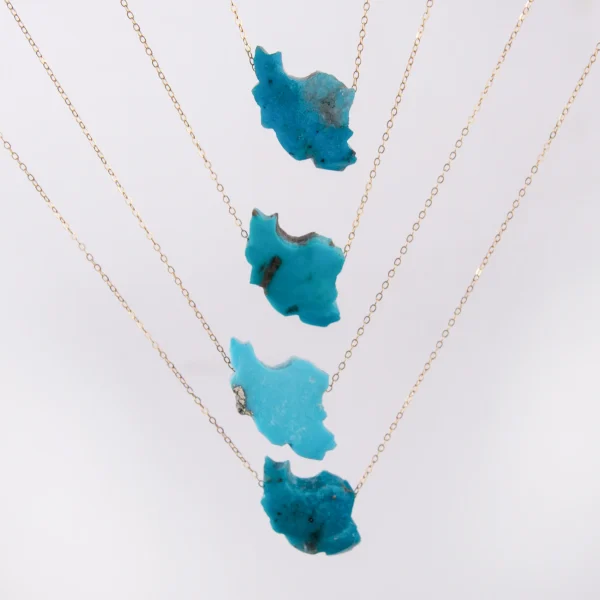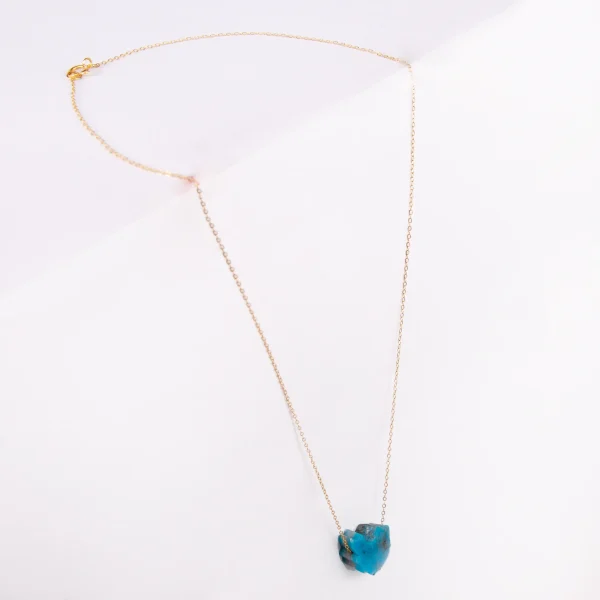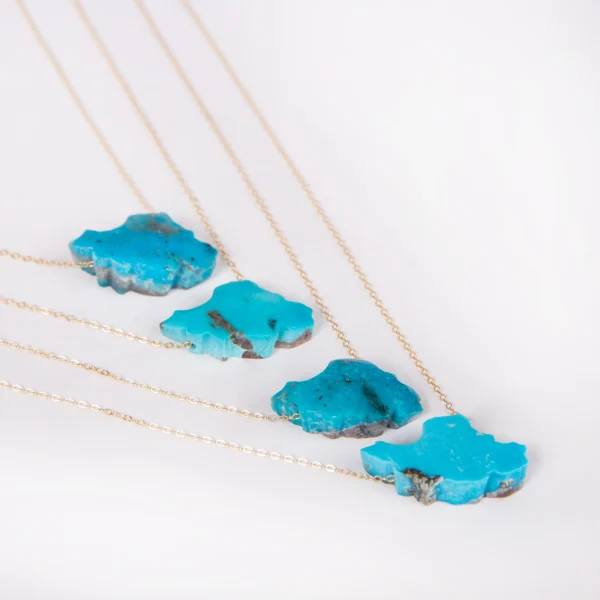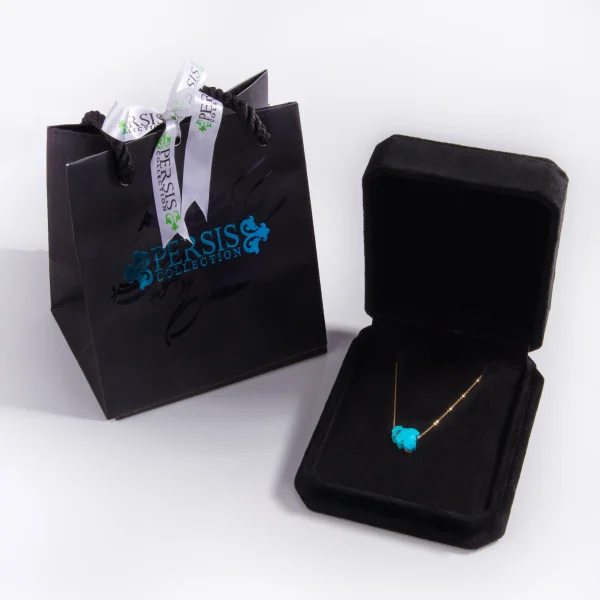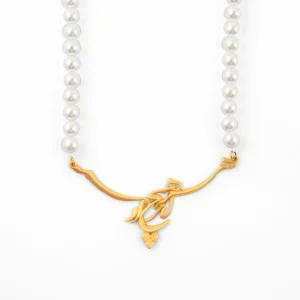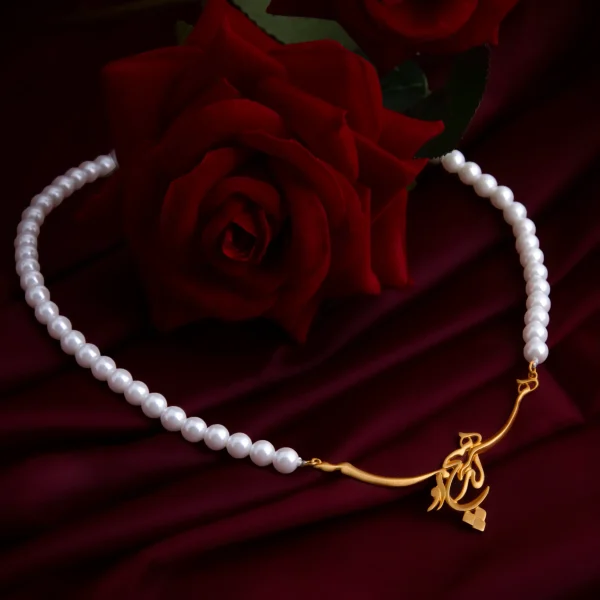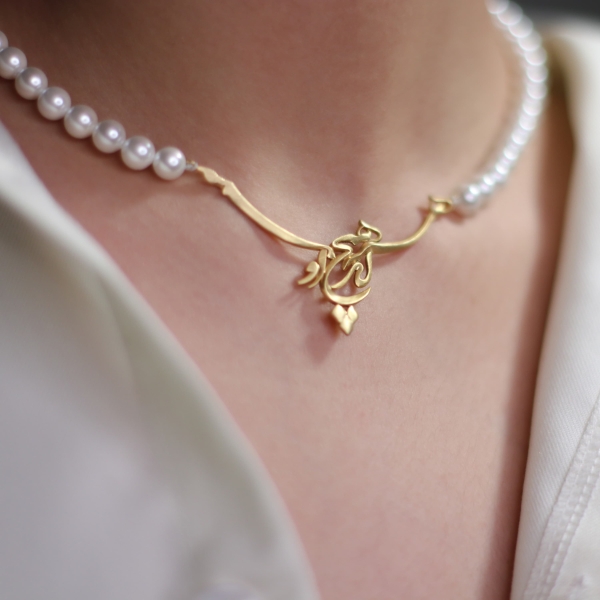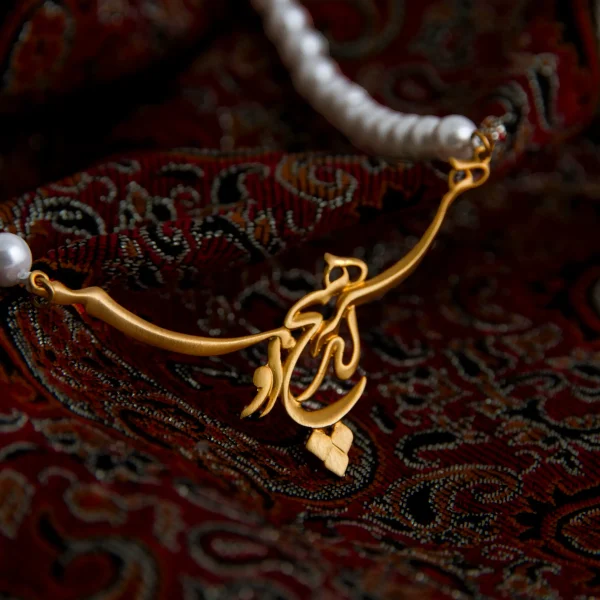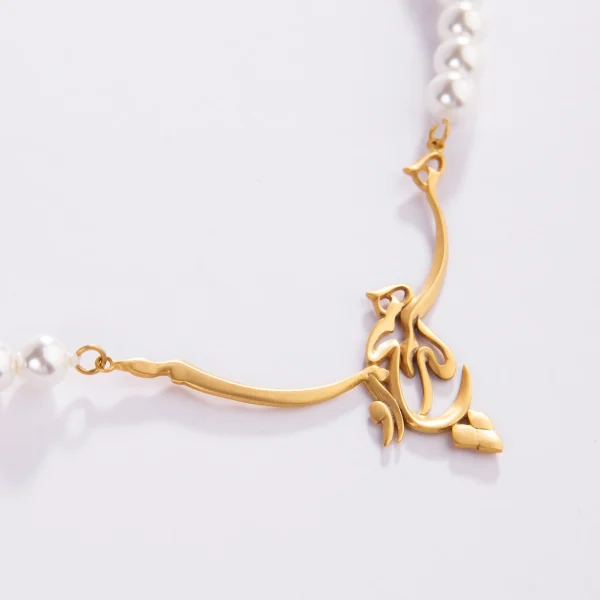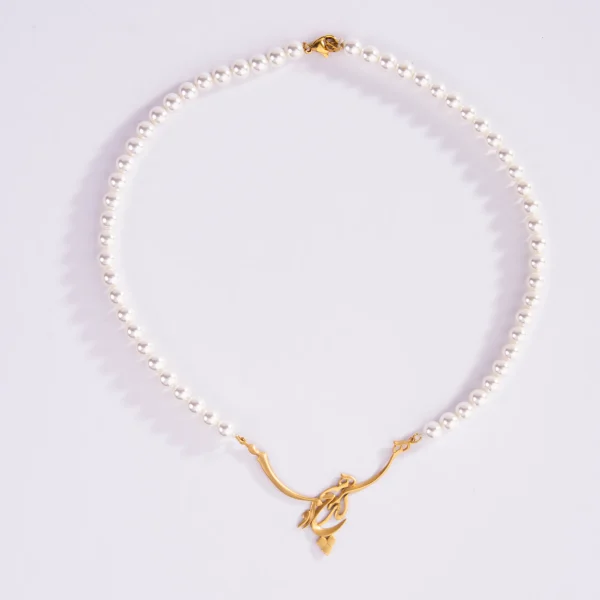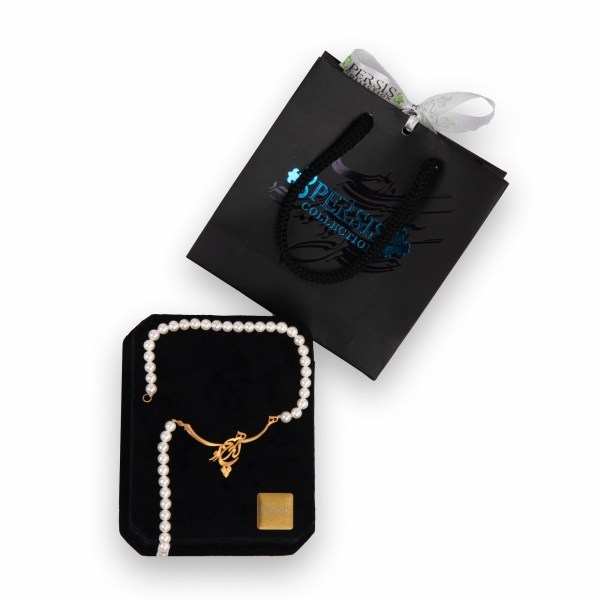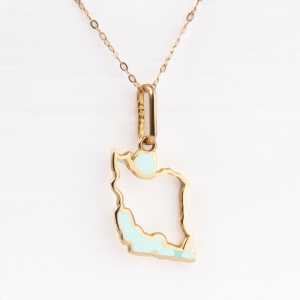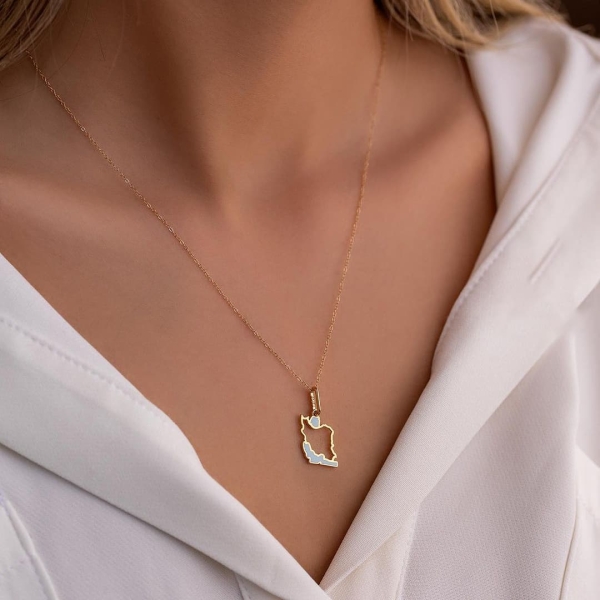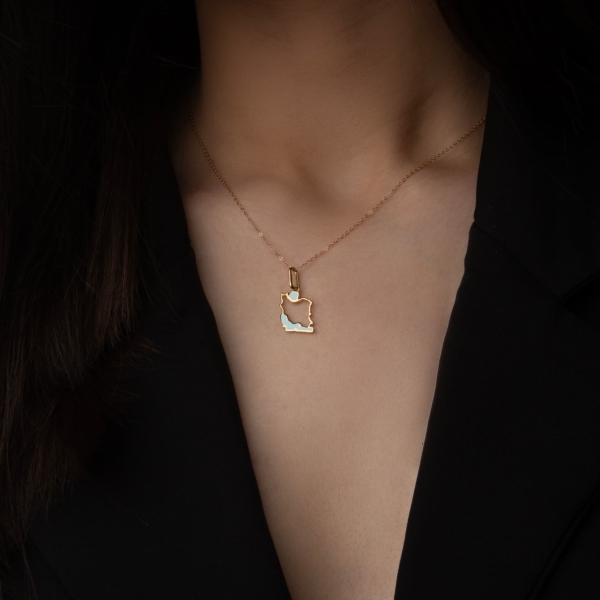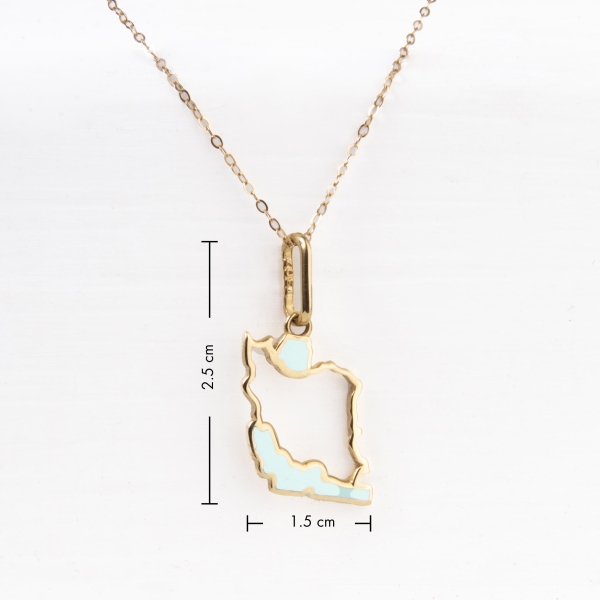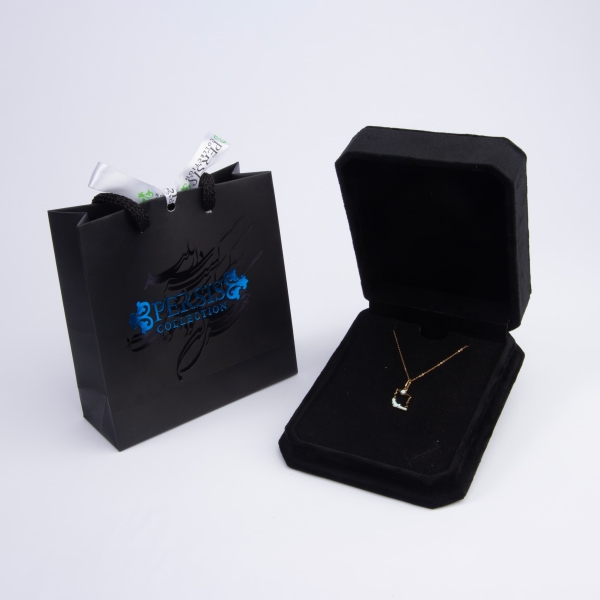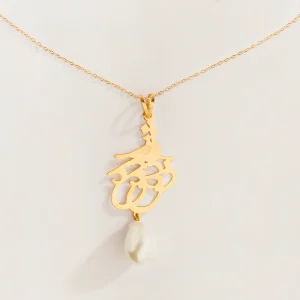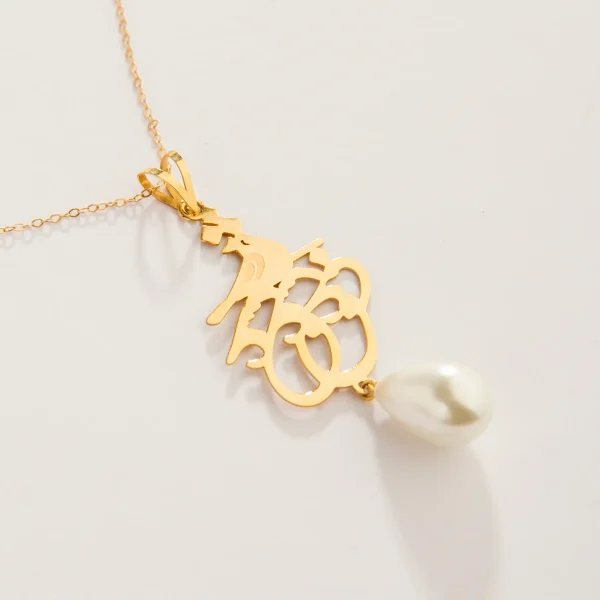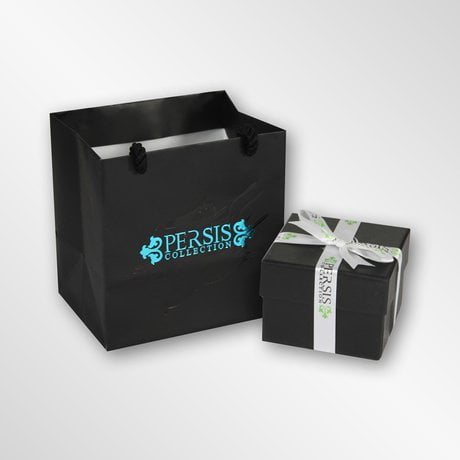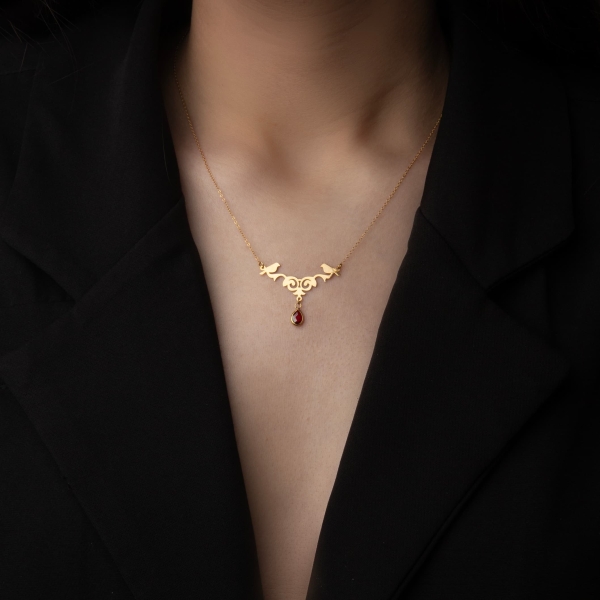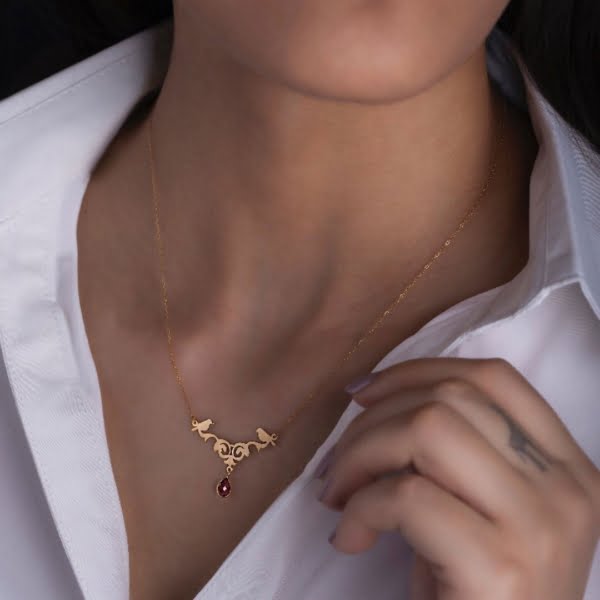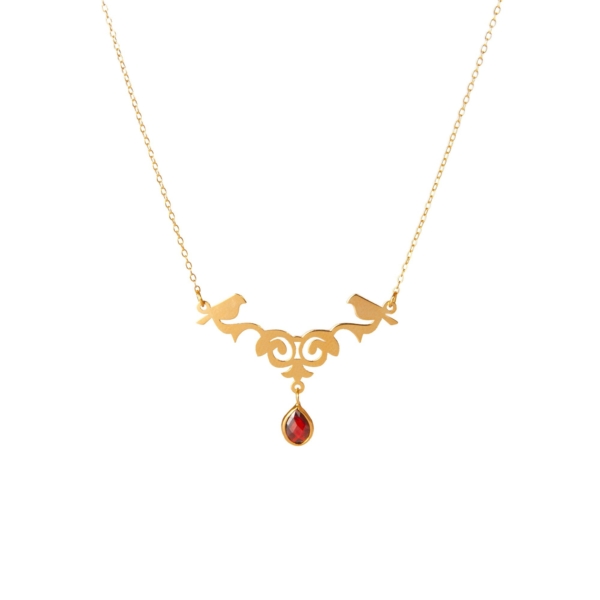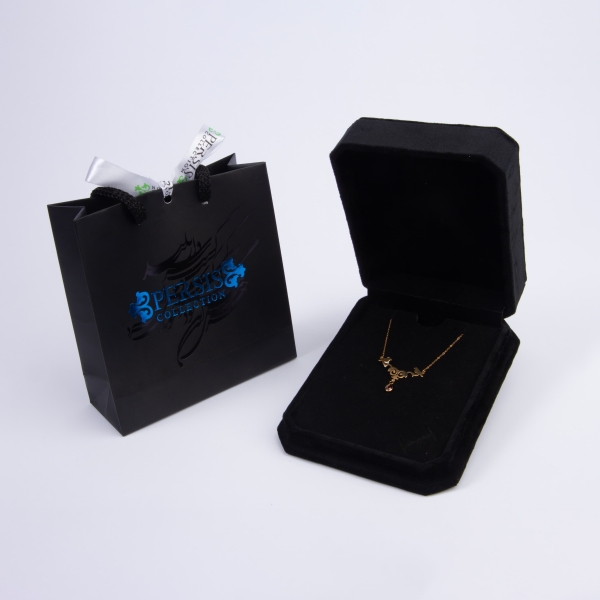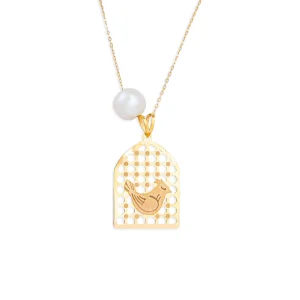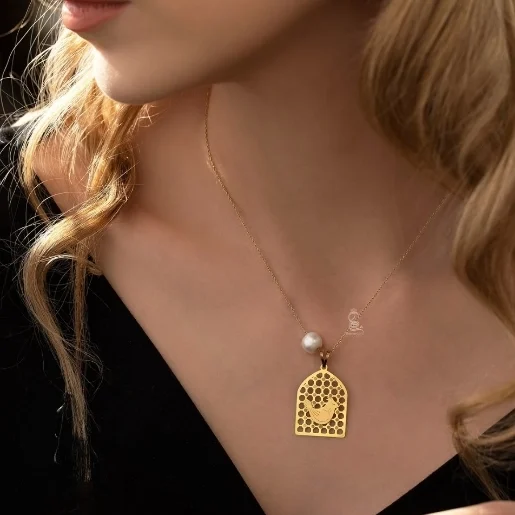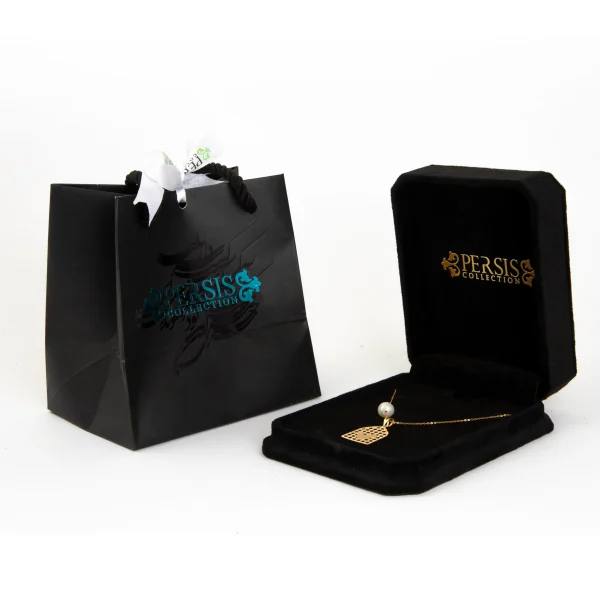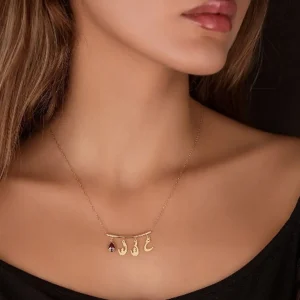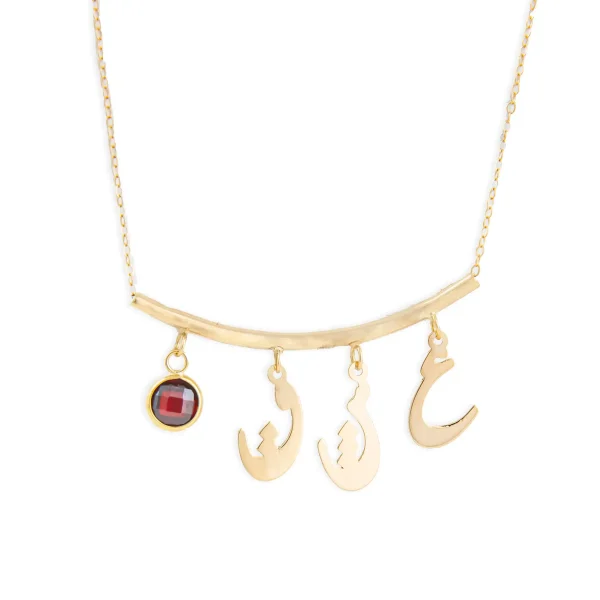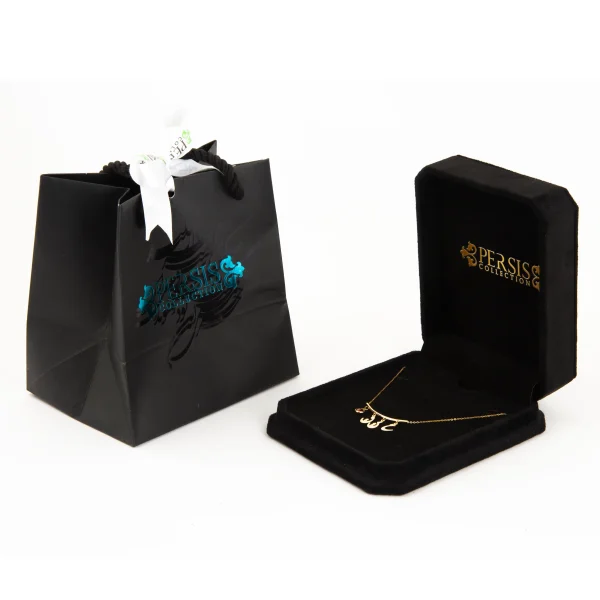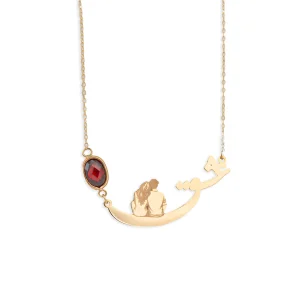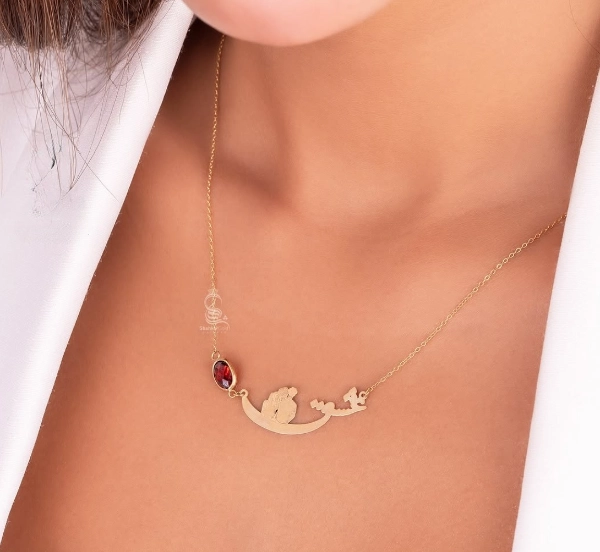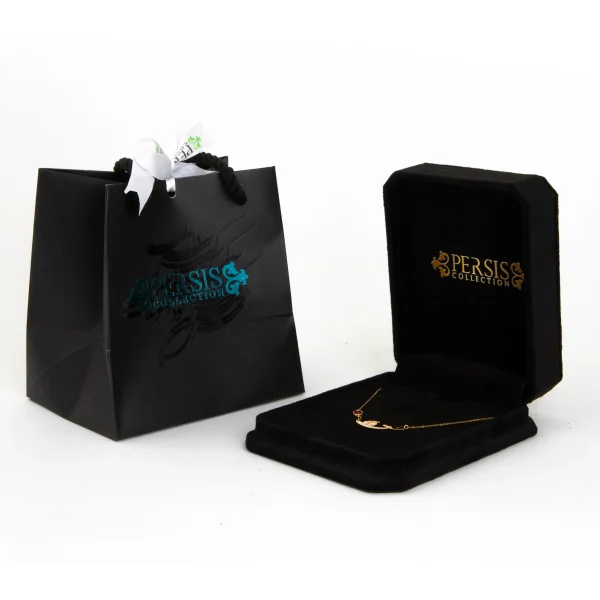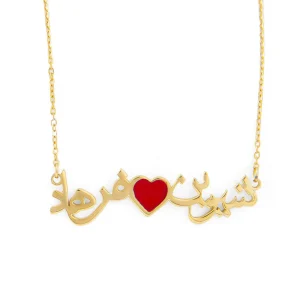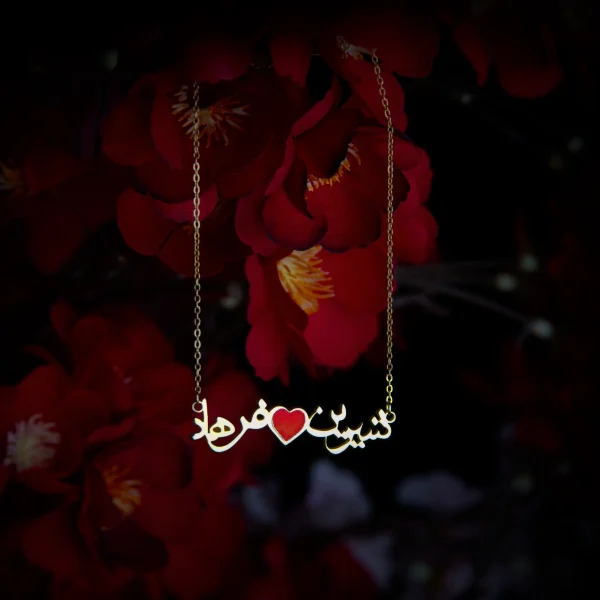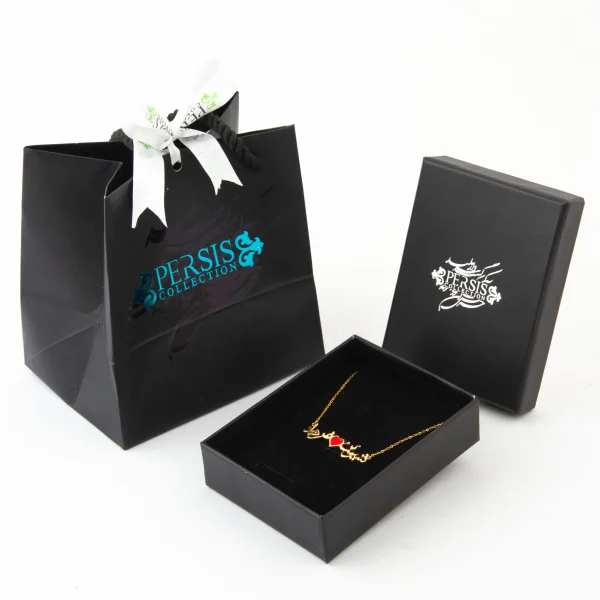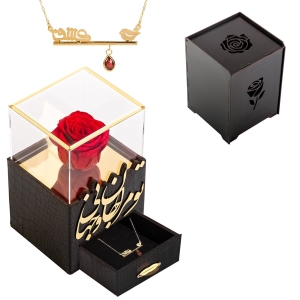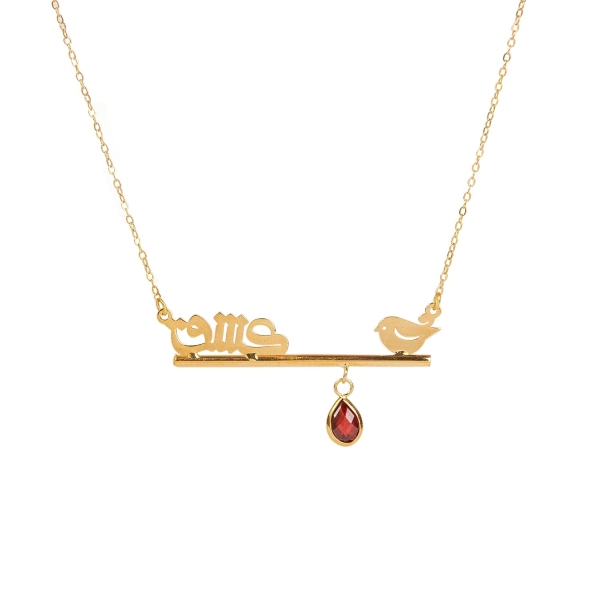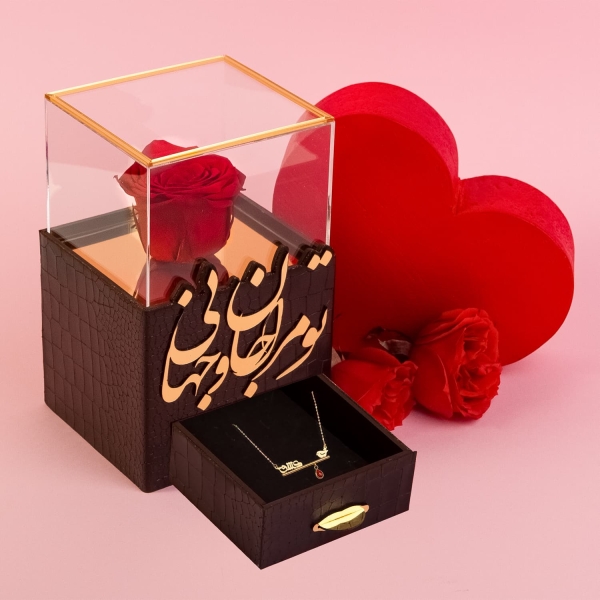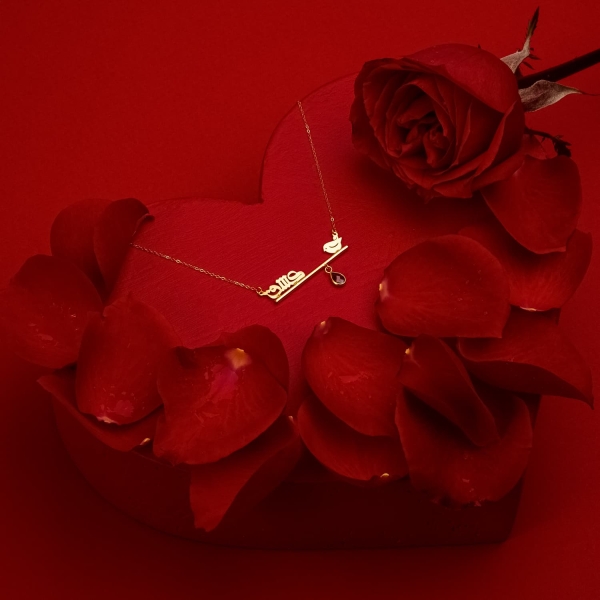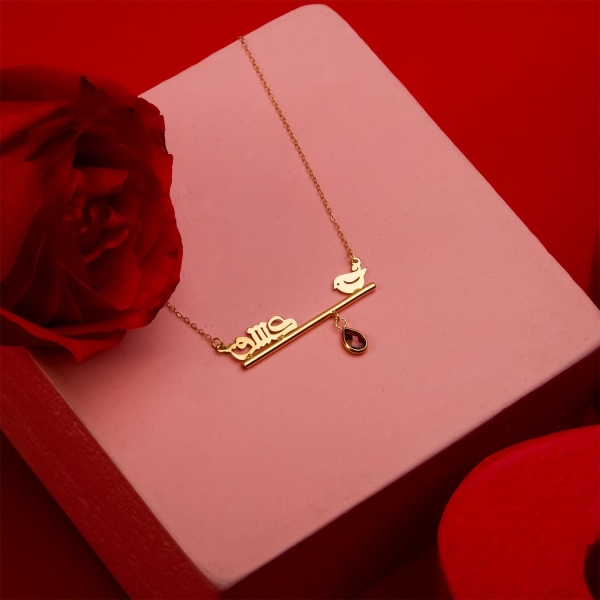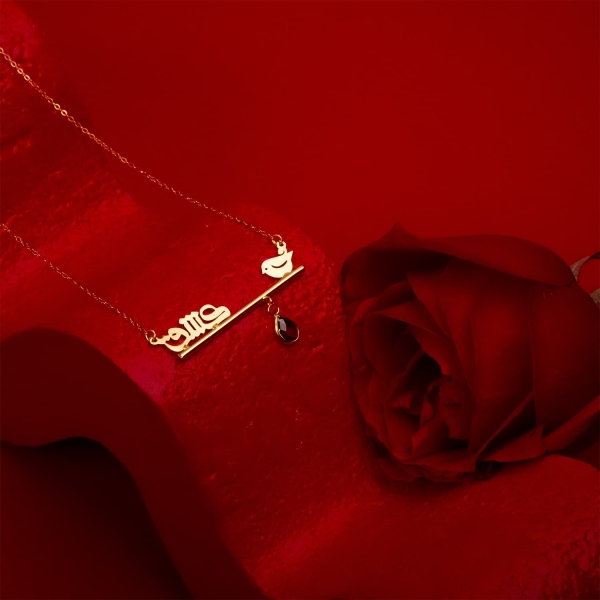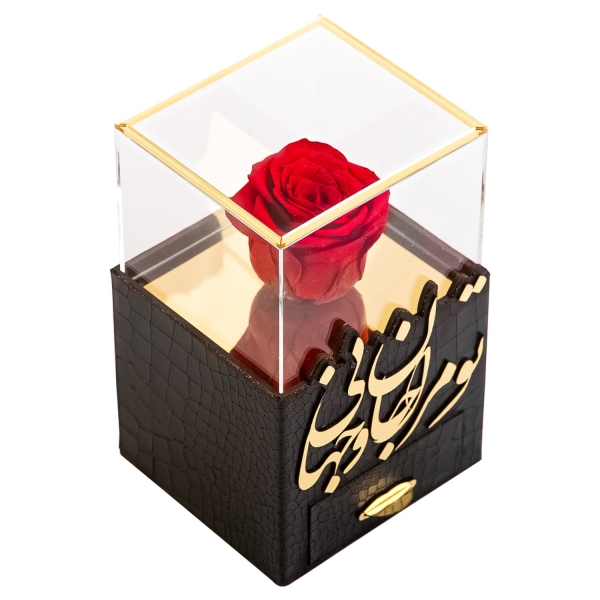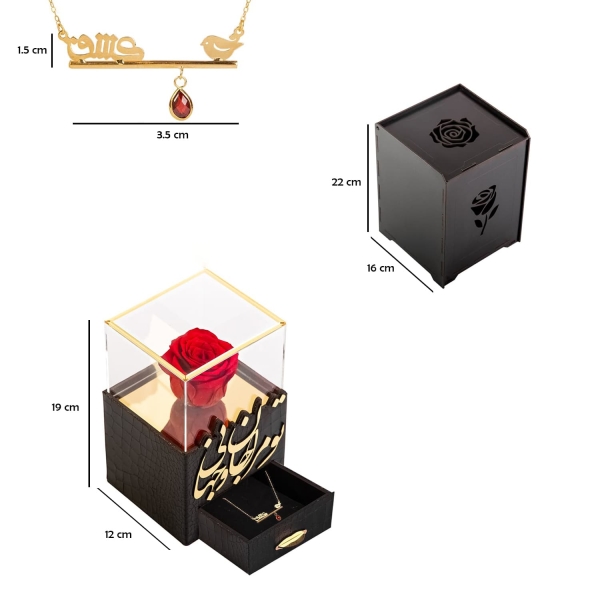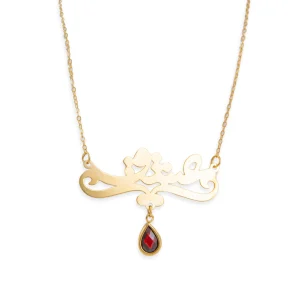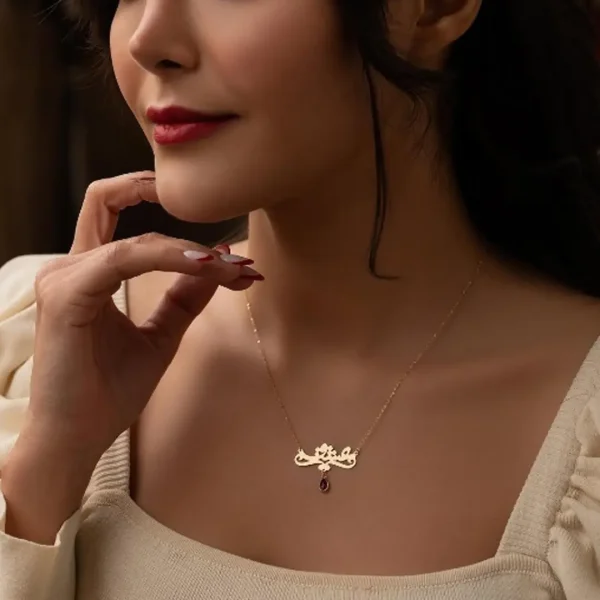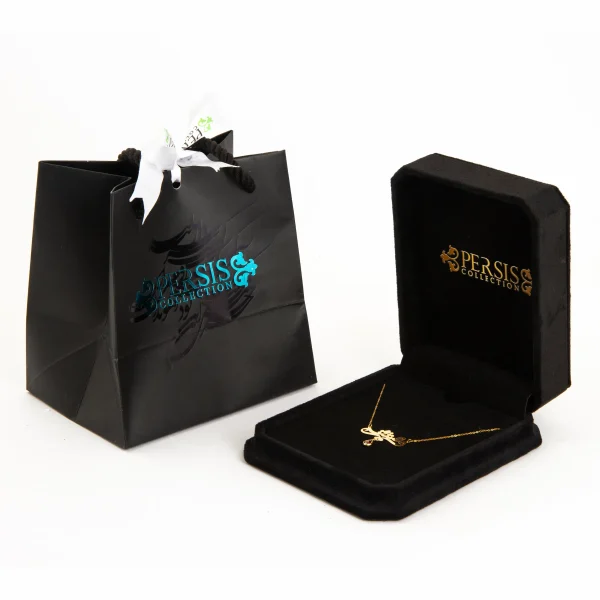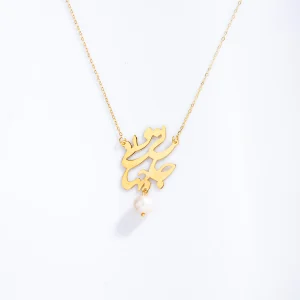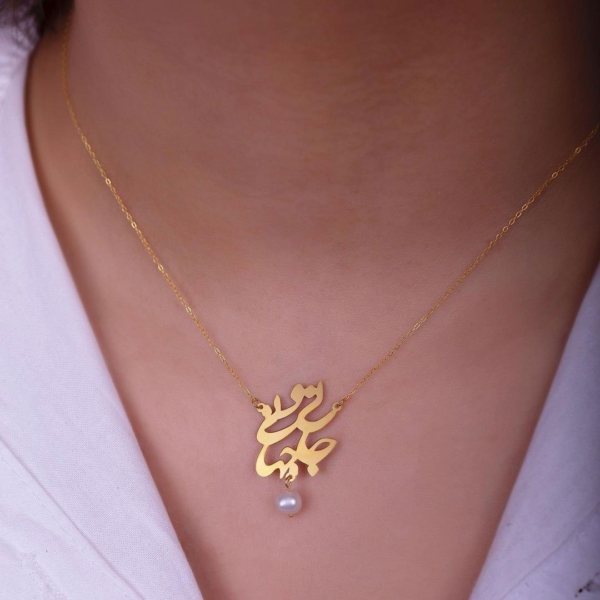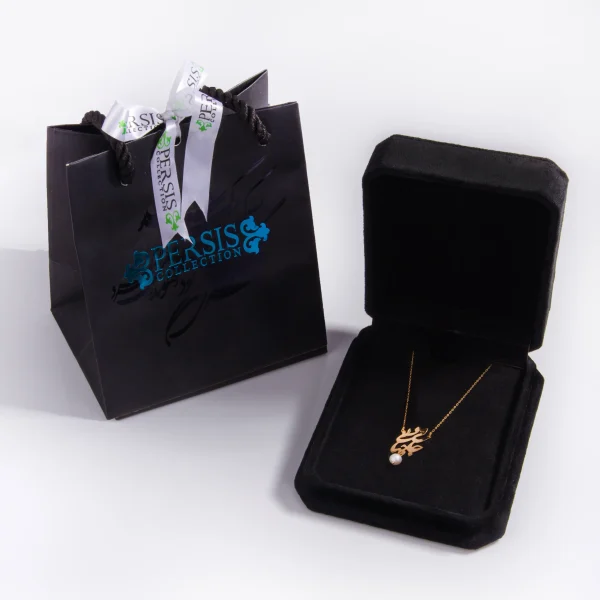Necklaces
Discover the beauty and heritage of Iran through our exquisite collection of Persian Women’s Necklaces. Each piece is a testament to the rich history, culture, and artistry that define Persian jewelry.
Couple’s Persian Love Necklace – Lovers Heart Pendant
$70.40 – $675.84Select options This product has multiple variants. The options may be chosen on the product page18k Golden Rose of Love Necklace and Preserved Rose
$381.44 – $486.40Select options This product has multiple variants. The options may be chosen on the product pagePersian Women’s Necklaces
Persian women’s necklaces are more than just accessories; they are timeless pieces of art that carry centuries of history and culture. Each necklace in our collection reflects the intricate craftsmanship and deep cultural symbolism that Persian jewelry is renowned for. Whether you’re looking for a Persian Necklace Farvahar, an antique Persian women’s necklace, or a Persian Turquoise Necklace, our selection offers a variety of styles, each with its unique story and significance.
Symbolism in Persian Necklaces: Farvahar and Beyond
One of the most iconic symbols in Persian culture is the Farvahar, often featured in Persian Necklace Farvahar designs. The Farvahar Necklace’s Meaning goes beyond its aesthetic appeal; it represents the divine power and human soul, a connection between the material world and the spiritual realm. This symbol is a staple in Persian jewelry, especially among those who wish to carry a piece of their heritage with them.
Similarly, the Shir o Khorshid 18K Gold Necklace incorporates the lion and sun motif, a symbol of bravery and royalty in Persian culture. Crafted in pure 18K gold, this necklace not only exudes luxury but also a deep cultural connection, making it a perfect heirloom piece.
Material and Craftsmanship: The Essence of Persian Jewelry
The true essence of Persian women’s necklaces lies in the meticulous craftsmanship and the use of noble materials. Our collection features Gold Persian Women’s Necklaces and Silver Persian Women’s Necklaces that are designed with precision and care. The Persian Women’s Necklace Gold pieces, often adorned with precious stones like turquoise, jade, and pearls, are crafted to perfection, making them ideal for both everyday wear and special occasions.
The Persian Turquoise Necklace and Persian Jade and Pearl Necklace are particularly admired for their vibrant colors and historical significance. Turquoise, known as “Firuzeh” in Persian, has been cherished for centuries as a symbol of protection and wisdom, while jade and pearls add a touch of elegance and purity.
Heritage and Tradition in Persian Women’s Necklaces
Persian women’s necklaces are not just decorative items; they are a reflection of Iranian heritage and tradition. The heritage Persian women’s necklace designs in our collection pay homage to ancient Persian art forms, including Eslimi 18K Gold Necklaces and Women’s Ghalamzani Necklaces. These pieces feature intricate engravings and patterns inspired by nature and Islamic art motifs, each telling a story of its own.
The Silver Persian Women’s Necklace designs, for example, often include traditional Persian inscriptions and symbols like the Tree of Life, representing growth and immortality. These necklaces are perfect for those who wish to wear a piece of Persian history close to their heart.
Personalized and Contemporary Designs
While many of our necklaces celebrate traditional Persian designs, we also offer modern and Personalized Necklaces that cater to contemporary tastes. These necklaces are perfect for those looking to combine personal significance with cultural heritage. Our Love Persian Women’s Necklace collection, for instance, offers romantic and meaningful designs that make perfect gifts for loved ones.
For those who appreciate the fusion of traditional and modern art, our Traditional Art Necklaces and Precious Stone Necklaces are perfect choices. These pieces blend the classic beauty of Persian motifs with the elegance of modern jewelry design, offering a unique and timeless accessory for any occasion.
Persian Women’s Necklaces: A Timeless Gift
A Persian Women’s Necklace makes an unforgettable gift, whether you’re celebrating a special occasion or simply want to express your love and appreciation. With our wide selection of gold, silver, and gemstone necklaces, you are sure to find the perfect piece that resonates with the recipient’s style and cultural heritage. Each necklace in our collection is a masterpiece, crafted with love and precision, ensuring that it will be cherished for generations to come.
Persian Women’s Necklace FAQ:
- What is the significance of the Farvahar symbol in Persian necklaces?
The Farvahar symbol represents the connection between the material world and the spiritual realm, often seen in Persian necklaces as a sign of heritage and spirituality. - What makes Persian women’s necklaces unique compared to other jewelry?
Persian necklaces are distinguished by their intricate designs, cultural symbols, and the use of noble metals and precious stones that reflect the rich history of Iran. - Do you offer gold and silver Persian necklaces?
Yes, we offer a wide range of Gold Persian Women’s Necklaces and Silver Persian Women’s Necklaces that combine traditional and modern designs. - What are the popular symbols used in Persian necklaces?
Popular symbols include the Farvahar, Lion, Sun (Shir o Khorshid), and Tree of Life, each carrying deep cultural and historical significance. - Can I find antique Persian women’s necklaces in your collection?
Yes, our collection includes Antique Persian Women’s Necklaces that are inspired by ancient designs, offering a timeless piece of art. - Are Persian women’s necklaces suitable for special occasions?
Absolutely! Many of our Persian necklaces are perfect for weddings, celebrations, and special events, adding elegance and cultural significance to your attire. - Do you provide worldwide delivery for Persian necklaces?
Yes, we offer guaranteed worldwide delivery for all our Persian necklaces, ensuring that you can enjoy our unique pieces wherever you are. - What are the popular stones used in Persian necklaces?
Popular stones include turquoise, jade, pearls, and rubies, each chosen for their beauty and symbolic meanings in Persian culture. - Can I personalize my Persian necklace?
Yes, we offer Personalized Necklaces where you can add your touch, making the necklace uniquely yours. - How do I care for my Persian necklace?
To maintain the beauty of your Persian necklace, avoid exposure to harsh chemicals, clean it with a soft cloth, and store it in a dry place.

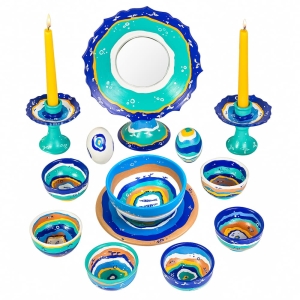 Evil-Eye Enchantment Haft Sin Set
Evil-Eye Enchantment Haft Sin Set 




